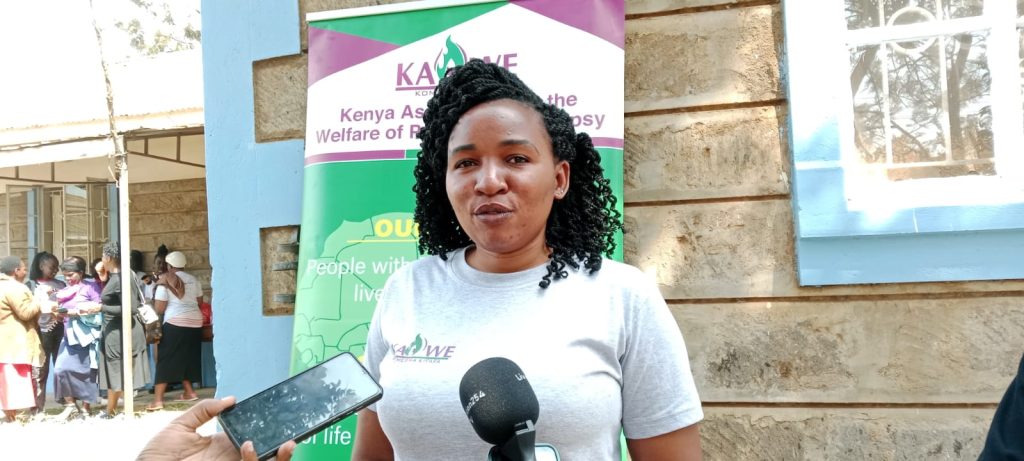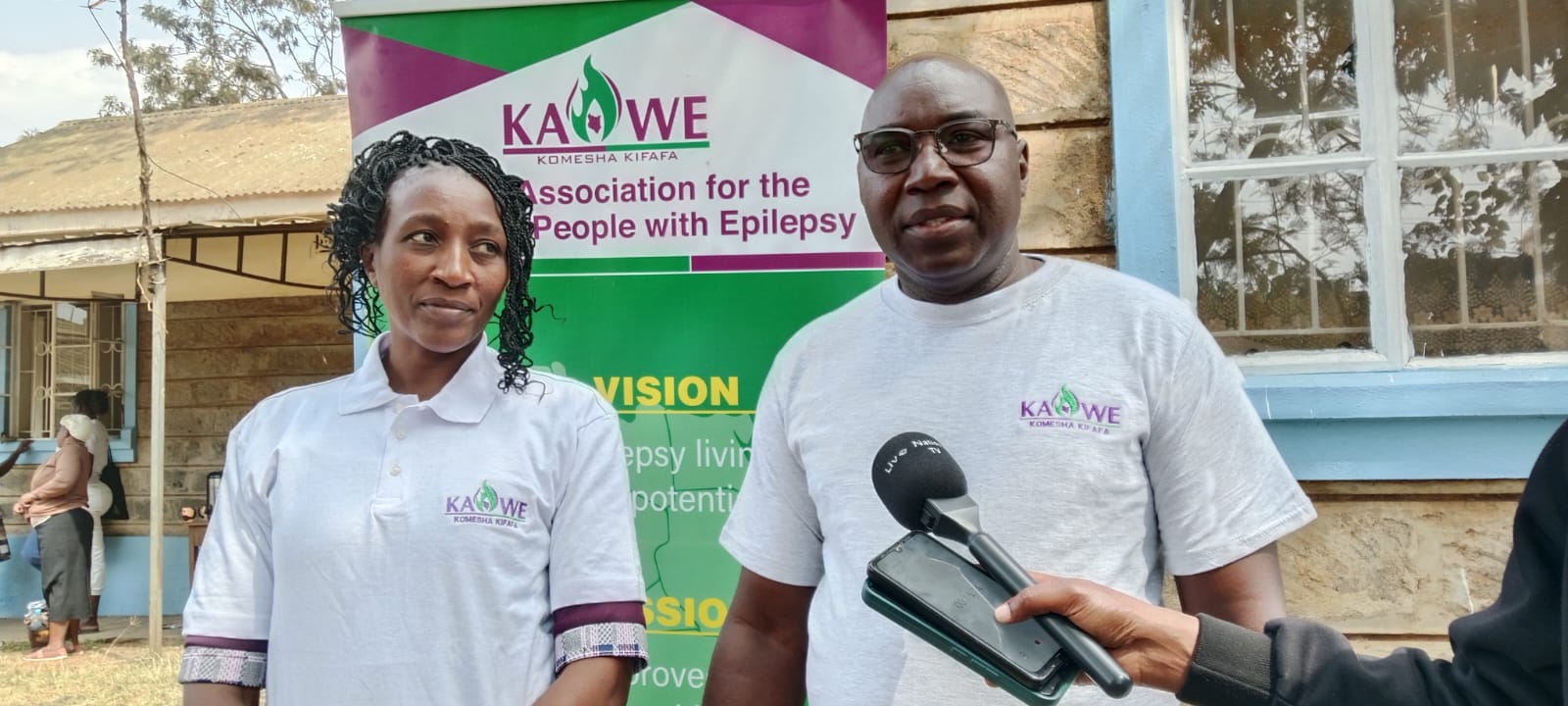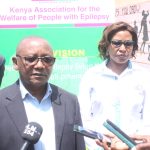(L-R) Clinical Psychiatric Officer Jecinta Gakuu and Embakasi North Sub-County Medical Officer of Health Dr. Richard Ngetich speaking during a media interview at Kariobangi North Health Centre on August 4, 2025.
By Peace Muthoka.
Nairobi, Kenya – August 4, 2025 — Health professionals and community partners are turning to primary health care as a critical entry point in the fight against epilepsy, as stigma and lack of knowledge continue to prevent many patients from seeking treatment.
At the center of this effort is Kariobangi North Health Centre, where Clinical Psychiatric Officer Jecinta Gakuu and Embakasi North Sub-County Medical Officer of Health Dr. Richard Ngetich led a full day epilepsy sensitization initiative supported by the Kenya Association for the Welfare of People with Epilepsy (KAWE).
“We are focusing on strengthening epilepsy care at the primary level,” said Gakuu. “Many patients don’t come to health facilities due to stigma and myths. But our community health promoters at Level 1, and clinicians at Level 2 and 3, are the first point of contact, and they must be empowered.”
In the morning, community health promoters who serve directly within households and communities were engaged in a session to help them identify individuals showing signs of epilepsy. Their role is to refer these patients to dispensaries and health centres where more advanced services are available.
“These Level 1 workers are vital. They are the bridge between the community and our health system,” said Gakuu. “They may not diagnose, but they can recognize symptoms and guide patients to where help is available.”
Health professionals from various Nairobi sub-county facilities participated in a Continuous Medical Education (CME) session aimed at improving epilepsy management. The training focused on equipping nurses, clinical officers, and other Level 2 and 3 healthcare providers with knowledge on diagnosis, treatment, and patient support.
Dr. Ngetich highlighted how epilepsy is often missed in lower-level facilities due to limited knowledge. “We’ve realized that only 20 percent of epilepsy cases reach our hospitals. The rest are stuck at home, misunderstood, and often mistreated,” he said. “Our goal is to bring care closer to where people live, starting from primary health care facilities.”

KAWE’s representative, Faith Muthoni speaking during a media interview at Kariobangi North Health Centre on August 4, 2025.
KAWE’s representative, Faith Muthoni emphasized the need to integrate epilepsy into routine services at the grassroots. “We are working with health centres across Nairobi from Huruma to Kariobangi to demystify epilepsy. It’s not witchcraft, it’s a manageable medical condition,” she said.
To further strengthen care, the government has rolled out a pilot project supplying free anti-seizure medication to selected health centres. However, the drugs are currently available only to patients registered with the National Council for Persons with Disabilities (NCPWD). During the activity, KAWE also assisted patients with registration.
“We are making sure that those diagnosed can access free medication at their nearest health centre,” said Gakuu. “To support this, we’ll be conducting mental health assessments in Kamulu on August 25 and Kariobangi on August 26.”
Currently, epilepsy clinics are integrated into routine services in several Level 2 and 3 facilities. These include Kariobangi North Health Centre ,Dandora 2 Health Centre, Mwiki Health Center, and Njiru Level 4 Hospital. At Level 5 facilities such as Mama Lucy, Pumwani, and Mbagathi hospitals, services are available daily.
“Primary health care is our front line,” said Dr. Ngetich. “We have trained workers, medication, and even surgical support when needed. The services are free, and they are available to all including non-citizens.”
With more than 50 million people worldwide living with epilepsy, and hundreds treated weekly in Nairobi, officials are urging communities to utilize their nearest health facilities for help.
“People should not suffer in silence,” said Gakuu. “The care starts from the ground up right from your community to your nearest clinic. That’s where the change begins.”










